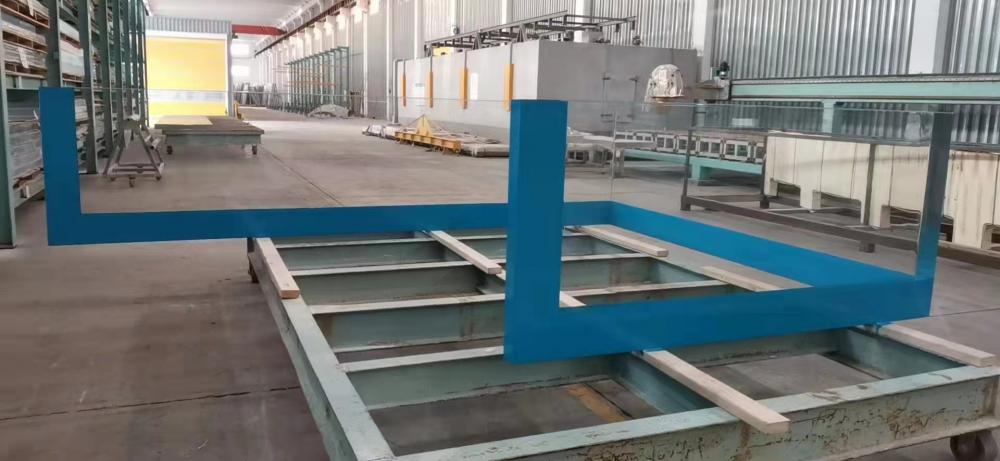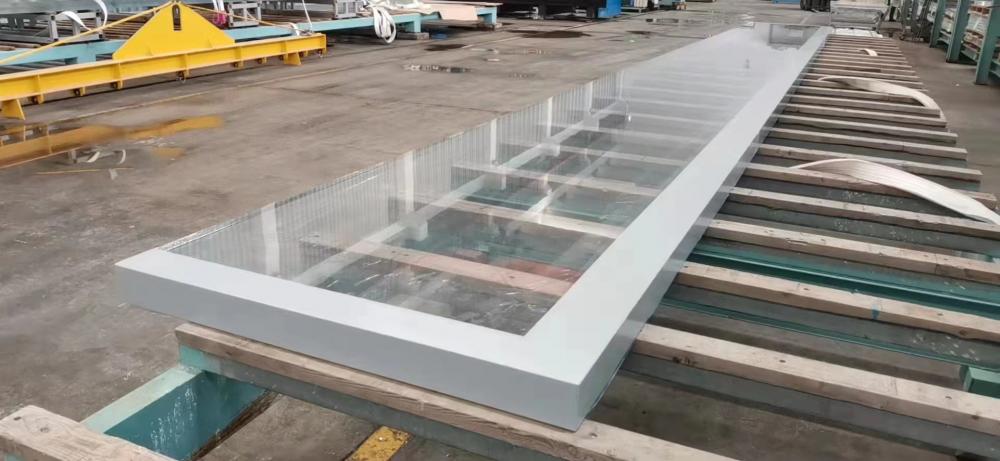The board of directors of Renault and Nissan both expressed a positive stance toward the potential collaboration with General Motors. In a joint statement, they welcomed GM into their alliance, saying, “We welcome GM to join our alliance.†If successful, this tripartite partnership could capture between 22% and 25% of the global automotive market, making it one of the largest auto alliances in the world.
In the heart of Las Vegas, a white building stood proudly, its presence a symbol of success. Nearby, the majestic MGM Grand, boasting 5,005 luxury rooms, echoed with the sounds of laughter, noise, and excitement typical of the city’s vibrant nightlife. Yet, the man who owned it remained calm and composed, smiling as he watched the world go by.
At that moment, time stood still on June 30, 2006. After waking from his memories, Kirk Kerkorian smiled and disappeared into the luxurious night of Las Vegas. At 89 years old, he moved with the energy of someone much younger, his mind sharp and focused.
His good mood spread across the globe, but not everyone shared in the optimism. Some were shocked, others fearful, some longed for it, while others rejected it outright. People asked: was this nearly 90-year-old man a devil or a dreamer, a fox or a tiger, a liar or a visionary?
Sixteen years ago, when Kirk Kerkorian began acquiring shares in Chrysler, whispers followed him. Eight years later, when he planned to take over Chrysler, Wall Street and Detroit questioned his moves. Now, the same scene unfolded again, and he remained at the center of it all.
On the last day of June, Kirk Kerkorian laid out his plan for the GM-Renault-Nissan alliance in Tracinda’s office. Renault and Nissan aimed to acquire a 20% stake in GM, and with 9.9% of the shares already in his possession, Kerkorian wrote to GM’s CEO, Wagner, urging discussion on behalf of the company.
Through his control of Tracinda, Kerkorian influenced key players like Luis Schweitzer and Carlos Ghosn, shaping the direction of the alliance. The suddenness of the move caught Wagner off guard, and automakers such as DaimlerChrysler, BMW, and Toyota raised concerns. Industry insiders from Detroit, Paris, and Tokyo were divided, echoing Dai Ke’s words: “For them, the alliance itself is more important than whether it happens.â€
Kirk Kerkorian and Ghosn were ready. In mid-June, Ghosn had already discussed GM’s participation in the Renault-Nissan Alliance with Kerkorian, with Jerry York, Kerkorian’s representative at GM, working behind the scenes to facilitate the talks.
On the day of the announcement, Kerkorian’s stock surged, earning him $1.316 billion—though still below his initial investment of $1.69 billion. However, things were moving in his favor.
The Renault and Nissan boards showed strong support for the alliance, stating, “Welcome GM to join our alliance.†If successful, the three giants could dominate 22–25% of the global market, becoming a true automotive giant.
By July 15, Ghosn and Wagner began discussions on a broader cooperation, focusing on technology, procurement, and platform sharing. Ghosn also sought to acquire more than 20% of GM’s equity, saying, “Our cooperation should be more extensive.†These two men became the most talked-about figures in this historic event.
At that time, Kerkorian and Schweitzer were quietly celebrating.
**Big Event**
On June 22, Wagner picked up the phone. Though he hadn’t petitioned, he had no choice. After meeting with Carlos Ghosn, the CEO of the Renault-Nissan Alliance, he felt uneasy. This was the first time in 12 years that such a meeting had occurred.
Some were jealous, others happy. After hanging up, Kirkland, a major GM shareholder, felt slightly excited. He was satisfied with his role as a spokesperson for GM through Jerry York. York’s May trip to London had been a success, as Ghosn agreed to “consult on business†with Kerkorian. Now, things were moving forward, and York played a key role in facilitating the conversation between Wagner and Ghosn. Kerkorian’s plan was coming to life.
After eight days of careful planning, the timing was right.
On June 30, Tracinda, controlled by Kerkorian, sent a letter to GM, Renault, and Nissan’s boards, proposing a tripartite alliance. In Kirkland’s view, the Renault-Nissan Alliance had proven successful, and GM should join. He suggested that GM sell 20% of its stock for $30 billion.
As soon as the news broke, GM’s stock jumped 8.6%, reaching $29.79 per share.
If this deal went through, the global car industry would be reshaped. If not, it would remain just a big story.
**25%: A Big Number**
On July 14, Carlos Ghosn told American media that the first step in cooperating with GM was to negotiate the cost of the partnership. On that basis, further talks could follow, though he didn’t want full control of GM. This was a classic Ghosn move—ambitious yet humble.
Ghosn had shown interest in Chinese cars, expressing admiration for the people and optimism about China’s automotive future. Standing at the Dongfeng Motor Corporation plant in Shiyan, he said, “I like the people here and am very optimistic about the development of Chinese cars.†One fact to note was that his speech was less dramatic than his actions. The collaboration between Dongfeng and Nissan in China had gradually taken shape.
For the Renault-Nissan-GM alliance, Ghosn first needed to improve Nissan’s position in North America. According to data from the American Automobile Manufacturers Association, Nissan sold only 75,000 vehicles in the U.S. in June—a 19% drop compared to the same period last year. Meanwhile, Renault had yet to enter the U.S. market. By 2009, the French automaker aimed to enter the world’s most competitive market.
By joining the GM alliance, the Renault-Nissan Alliance could leverage GM’s North American performance to achieve its goals. Together, the three companies could capture 22–25% of the global market, becoming the largest automotive alliance in the world.
For GM, joining the alliance would reduce costs through shared parts and platforms, cut labor expenses, and end its continuous losses in North America.
However, rivals like BMW, DaimlerChrysler, and Toyota voiced concerns. A 25% global coalition was a huge number.
**9.9%: Major Shareholder**
“I think he knows what he wants. I think he is defending his interests. Frankly, I understand,†said Kirk Kerkorian when assessing Ghosn. This made Ghosn once again the center of attention.
In this scenario, Ghosn and Wagner were just performers. Behind the scenes, Kerkorian and Schweitzer were the real architects. Kerkorian’s 9.9% stake in GM gave him the power to push the alliance forward, and meeting with Ghosn marked the beginning of the story.
Kirk Kerkorian: A hidden billionaire known for his constant changes, he owns 9.9% of GM shares. Through his company Tracinda, he orchestrated a major event, aiming to form an alliance between two global automakers—GM and Renault-Nissan.
After secret talks with Ghosn, he hoped that the Renault-Nissan Alliance would invest $30 billion to buy 20% of GM shares. He conveyed this idea in a letter to GM’s board. At the same time, Renault and Nissan publicly supported the proposal.
In 2005, Kerkorian bought 56 million shares of GM. To date, the stock has not turned a profit.
Louis Schweitzer: The grandson of the great theologian Albert Schweitzer, he is a moderate and sensible executive. He transformed the state-owned Renault into a globally recognized automaker. Outside Europe, Renault was little known, but now its global influence is growing.
Schweitzer was the driving force behind the Renault-Nissan alliance. In 1999, he made a “farmer bet†by investing $5.4 billion in struggling Nissan, believing that Ghosn could turn the company around. As Ghosn’s reputation grew, Schweitzer supported any deal with GM.
Rick Wagner: The GM CEO facing intense pressure, he is trying to rebuild the company by closing factories and cutting jobs. Rumors of his departure have circulated, but he received a vote of confidence from the GM board. This alliance would mean sharing his power.
Carlos Ghosn: Known as the cost-cutting expert in the industry. In this deal, he said:
“If you are a winner, you may be optimistic about the alliance; if you are not a winner, you may also be optimistic. Since we have a good job, we are optimistic about the alliance. Obviously, we will consider emotional factors and past experiences; but honestly, on this platform, we are very clear and objective about potential possibilities.â€
“If we have to choose the timing, for Nissan and Renault, this is not a terrible time; but when you meet the opportunity and don’t pick it, whether it is determined or uncertain; when GM shareholders first proposed this resolution, we accepted it.â€
Jerry York: The former CFO of Chrysler, a long-time adviser to Kerkorian. After Kerkorian began buying GM shares, York joined the GM board and promoted the Renault-Nissan alliance. A strong figure, he publicly stated that GM could benefit from Ghosn’s management style.
**37: A Big History**
Since the late 1980s, there have been 37 major mergers and reorganizations.
- 1989: Ford acquires British Jaguar for £1.6 billion
- 1990: GM buys 50% of Saab in Sweden for $60 million
- 1991: Volkswagen buys 30% of Skoda Auto, later acquiring 100% for 2.25 billion marks
- 1993: Renault and Volvo abandon merger plans
- 1994: BMW acquires British Rover Motors for $1.2 billion
- 1996: Ford increases Mazda’s stake to 33.4% for $482 million
- 1998: Daimler-Benz acquires Chrysler for $35 billion
- Volkswagen buys Bentley and Rolls-Royce for $854 million
- GM increases stake in Isuzu to 49% for $456 million
- Ford sells 9.4% of Kia Motors for $11 million
- GM buys 6.7% of Suzuki for $315.4 million
This list shows how the automotive industry has evolved through strategic partnerships and acquisitions, setting the stage for future alliances like the Renault-Nissan-GM collaboration.
Acrylic Swimming Pool Panel
Acrylic swimming pool panel can be used for the side wall and bottom of the swimming pool, transparent crystal clear transparent, high gloss, smooth surface level off, the light transmittance as high as 92%, pervious to light, light weight, lighter than common glass half, bear the load of small buildings and stents, safety performance is high, almost no risk of fracture, adaptability to the natural environment is very strong, Even if a long time in the sun, wind and rain will not make its performance change, anti-aging performance is good, in the outdoor can also be safe to use, easy to maintain, easy to clean, the rain can be cleaned naturally, or with soap and soft cloth to scrub. 


Acrylic Swimming Pool Panel,Pmma Swimming Pool Panel,Pmma Swimming Pool Wall Panels,Pmma Swimming Panel Pools
Jiangsu Jinsui Acrylic Technology Co., LTD , https://www.jinsuiacrylic.com



![<?echo $_SERVER['SERVER_NAME'];?>](/template/twentyseventeen/skin/images/header.jpg)